Anti-submarine capabilities of the General Atomics MQ-9B SeaGuardian UAV
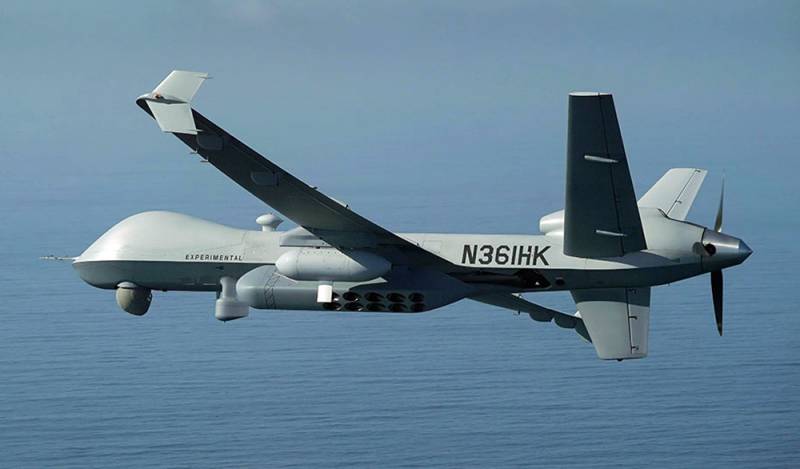
UAV MQ-9B with SDS buoy drop devices
American company General Atomics Aeronautical Systems Inc. (GA-ASI) offers customers the MQ-9B heavy unmanned aerial vehicle in the SeaGuardian maritime version. Such a UAV is intended for long-term patrols and search for various targets. Due to the developed modular surveillance complex, such a UAV is able to search for and take on tracking even underwater targets.
Updated platform
The MQ-9A Reaper unmanned aerial vehicle (aka Predator B) made its first flight back in 2001. After several years of testing and development, it began to enter service with various structures in the United States and other countries. Shortly thereafter, GA-ASI began development of an updated version of the UAV, originally designated the Certified Predator B.
As part of the "Certified Predator-B" project, it was planned to modify the existing design and equip it with new devices. Due to this, they were going to increase flight performance, as well as expand the range of tasks to be solved. In addition, the upgraded UAV got the opportunity to fully work in civilian air traffic control circuits.
UAV Certified Predator B received an updated airframe. It made more extensive use of plastics and composites, and provided for various measures aimed at simplifying production and operation. The wingspan was increased from 20 to 24 m, and additional internal volumes made it possible to increase the fuel supply. Due to this, the duration of the flight at operating altitudes exceeded 40 hours. The drone received a new optoelectronic station; worked out the possibility of mounting a small-sized airborne radar.
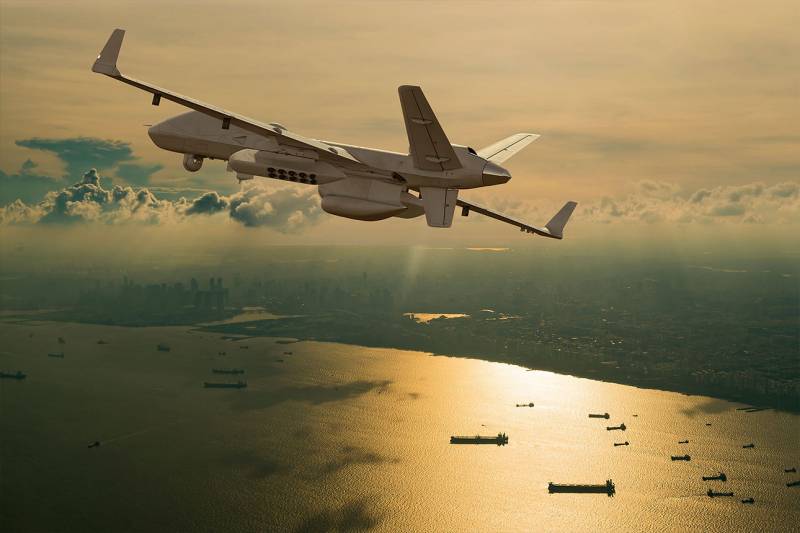
The management system has changed radically. It was rebuilt on a new component base and equipped with additional components. In particular, for the first time in the UAV family from GA-ASI, a “civilian” airborne collision avoidance system (TCAS) was introduced. Also, the autopilot received independent takeoff and landing modes. The ground control station was almost completely rebuilt.
In the middle of the tenth years, GA-ASI began to promote the upgraded UAV on the market. At this stage, the "certified" drone received the designation MQ-9B SkyGuardian ("Sky Guardian"). A modification of the UAV was also developed for use by the naval forces, it was called the MQ-9B SeaGuardian ("Sea Guard").
Since 2016, GA-ASI has been experimenting with the introduction of anti-submarine weapons. In addition to the existing guidance systems, SeaGuardian received blocks for transporting and firing sonar buoys, as well as electronics for interacting with them. In November 2020, a similar anti-submarine complex passed the first tests and showed good results. To date, the development of such tools has been completed, and the development company is waiting for orders.
Surveillance tools
UAV MQ-9B SeaGuardian is intended for surveillance and reconnaissance in the interests of the naval forces. He must carry out long patrols in a given area and look for various targets. For such searches on board drone different systems can be installed; the customer / operator has the opportunity to select a specific set of devices.
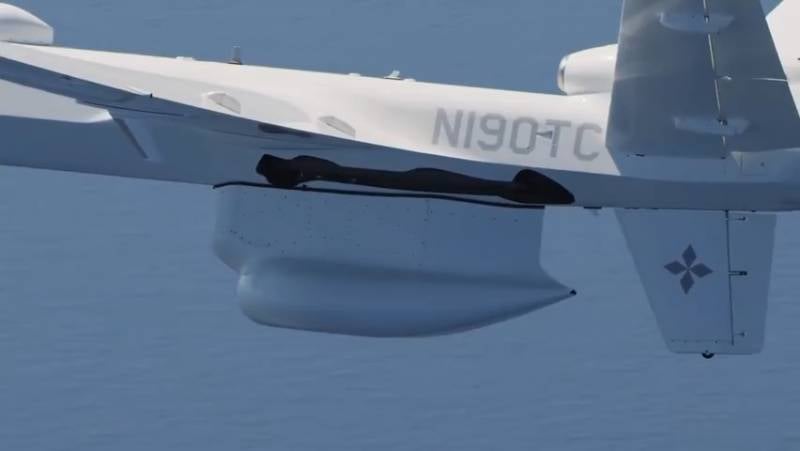
Radar Leonardo Seaspray close-up
Like previous versions of the Reaper, the Sea Guardian is equipped with a multi-channel optical-electronic system. In a spherical housing under the bottom of the fuselage are a day and thermal imaging camera with a stabilizer, as well as a laser rangefinder. The function of transmitting video signal and data from the range finder to the control station in real time has been retained. The exact characteristics of the OES remain unknown, but from published data it follows that it provides observation from any flight altitudes at a distance of tens of kilometers.
Unlike the "land" version of the UAV, the naval SeaGuardian can carry its own radar and search for surface targets. Under the bottom of the drone, a Leonardo Seaspray 7500E V2 locator is mounted in a container version. Such a radar is equipped with AFAR and is capable of detecting surface ships of all classes at long distances. At shorter distances, submarines are detected on the surface or their periscopes raised above the water.
In ASW configuration, the MQ-9B carries two or four SDS drop units for transporting and dropping sonar buoys. These units use AN/SSQ-36B passive buoys, AN/SSQ-53G passive directional buoys and AN/SSQ-62°F active buoys. Depending on the type of buoys, the ammunition load of one SDS block is from 10 to 20 items. Thus, SeaGuardian can lift from 20 to 80 buoys into the air, depending on the composition of the kit and the tasks assigned.
The standard SMCS control and communication system is used to receive data from the buoys. With the help of a standard UAV communication complex, reconnaissance data is transmitted to a ground control station. Then the information is used in the usual way - it is transferred to the headquarters and on its basis an attack is carried out with anti-submarine fire weapons.
Claimed Benefits
It is assumed that the MQ-9B SeaGuardian UAV with anti-submarine equipment is able to take on some of the work of full-fledged patrol aircraft. He must patrol and search for targets, but the fight against found underwater objects is assigned to other components of anti-submarine defense. On the possibility of equipping the drone with the necessary for this weapons not reported.
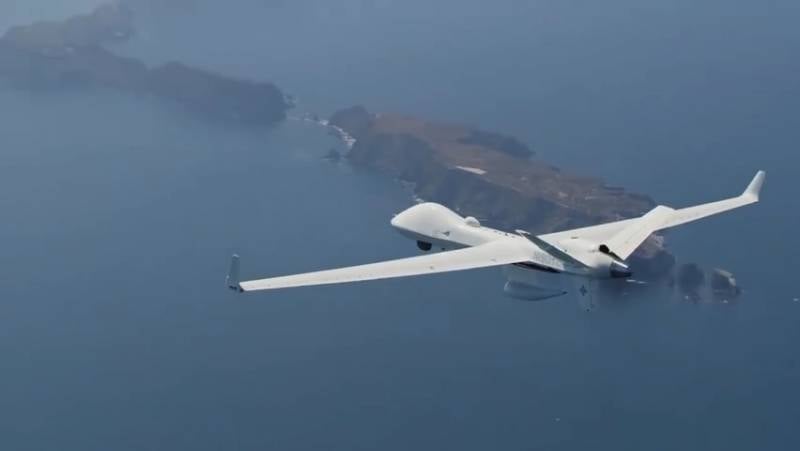
Reportedly, the MQ-9B has a number of strengths that increase its potential in the context of anti-submarine defense. Thus, the radius of action of a drone with a full set of suspension equipment reaches 2000-2200 km, and the flight duration is 18-20 hours. Thanks to this, the Sea Guardian is able to carry out long-term patrols of a given area and literally wait for the appearance of a submarine.
Due to the shift work of several UAVs, it is possible to increase the total duration of searches, including within large areas. At the same time, the cost of such patrols will be several times less than in the case of manned aircraft.
The principles of using sonobuoys are generally similar to a full-fledged basic patrol aviation. The UAV must drop them in the intended location or passage of the underwater target and then act in accordance with the incoming information. In terms of the total number of buoys on board, the MQ-9B is seriously inferior to anti-submarine aircraft, but the developers believe that its ammunition load is quite sufficient to solve the assigned tasks.
The lack of their own weapons is not considered a fundamental problem. MQ-9B should work as part of a multi-component defense system, including armed elements. It is they who will attack the submarines according to the target designation of drones. This approach to the organization of combat work, with certain shortcomings, allows you to use the potential of the UAV and do without unnecessary costs.
Without the attention of customers
The MQ-9B SeaGuardian UAV has been on the market since the middle of the last decade and has already attracted the attention of customers. GA-ASI has been able to sell several of these products to foreign countries and is awaiting further orders. It is curious that the naval MQ-9B has not yet interested the US Navy, which was considered as the main buyer.
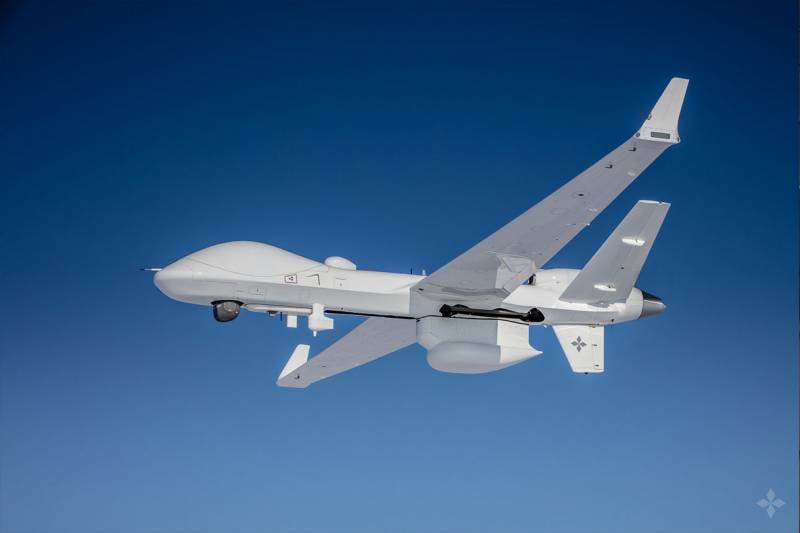
In 2020-21 the development company has tested the unmanned complex in an anti-submarine configuration, and is now ready to supply the appropriate tools to customers. However, as far as is known, no one has yet ordered a complete set of tools to search for submarines. Past buyers continue to use their drones only to search for targets on the surface with the help of ECO and radar.
The lack of interest in the anti-submarine version of the MQ-9B can be explained by several factors. First of all, this is the recent completion of such a project - potential customers have not yet had time to decide whether they need new systems. In addition, attention should be paid to the peculiarities of the development of naval aviation in countries buying SeaGuardian. They often also purchase American P-8A Poseidon patrol aircraft with a full range of anti-submarine weapons. In the presence of such an aircraft, the purchase of UAVs with buoys may be considered inappropriate.
Ambiguous Results
Thus, General Atomics continues to use its experience in creating unmanned aerial systems, and also introduces new solutions. New modifications of already known equipment with improved characteristics and new functions are being developed. However, the experience of the MQ-9B SeaGuardian project shows that not all such developments are able to interest customers.
The transfer of anti-submarine systems to an unmanned aerial platform provides a number of advantages, although it is associated with some limitations. Proper use of the strengths of such equipment allows you to radically rebuild the system for searching for and destroying underwater targets, increasing its performance and reducing the cost of operation. However, so far such ideas and expectations remain only in promotional materials, and real customers are in no hurry to participate in overly bold experiments.
Information